The post All about Japanese teas first appeared on Blog Royal Tips.
]]>- Most of the teas are mechanically picked using hand-held hedge trimmer type machines or ride-on harvesting machines.
- The tea producers do not sort their tea at the end of the process; instead they sell the unsorted tea, known as ‘aracha’, to wholesalers who sort all the large batches of the teas they buy into different types which are then sold to retail outlets or international buyers.
- Teas are sold at auctions held in various parts of the country; however, unlike tea auctions held in other traditional tea producing countries, the buyers at a Japanese auction have not tasted the teas before the auction takes place; they examine the tea leaves very carefully and can ask to have them brewed if they would like to taste.
The names of Japanese teas give us a lot of information about each tea. Here is a list of the best known Japanese teas that are available in international markets.
Shincha (meaning ‘new tea’), also called Ichiban-cha (meaning ‘first tea’)
This is the very first harvest of the year. During the winter months, the plants store nutrients, minerals and amino acids such as L-theanine, so when the tea is picked in early spring (in mid to late April), the teas are wonderfully umami, sweet and smooth. Because of the very slow growth at the start of the season, only small quantities of Shincha are made each year; some Shincha teas are processed by machine and some by hand and the tea can be steamed or panned.
Sencha (meaning ‘simmered tea’)
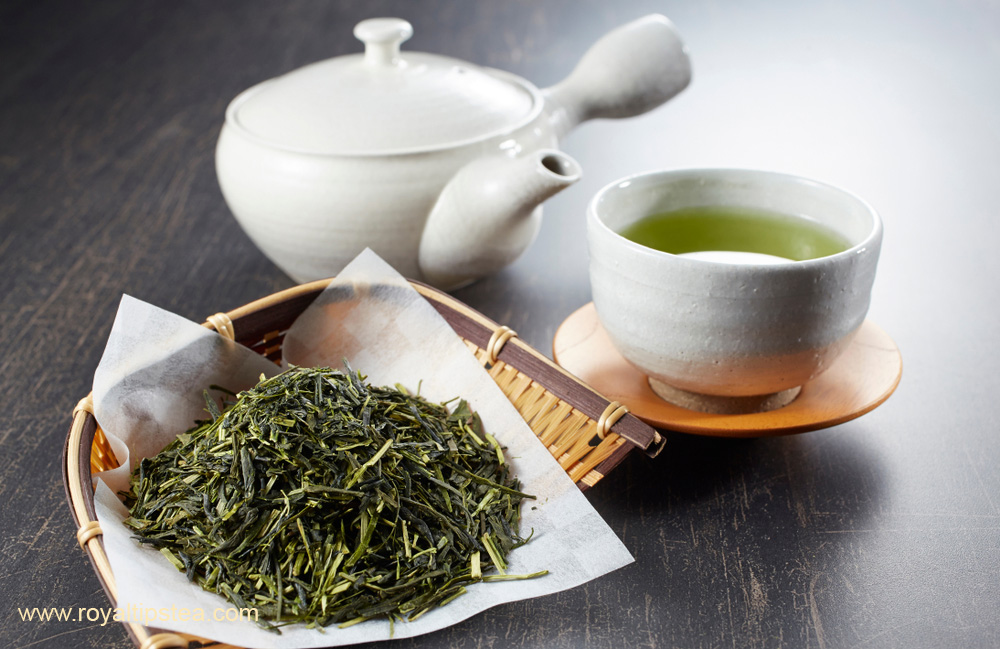
After the very limited Shincha harvest, Sencha is the first main harvest of the year and is processed by steaming, hence its name. This method of stopping oxidation by steaming the freshly picked leaves was invented in Japan in 1738. Most Sencha teas are harvested mechanically and can be processed by hand or machine; it is the most widely produced and consumed tea in Japan.
Bancha
Bancha is made from the 2nd, 3rd and 4th harvests picked in June, July, August and September, and is therefore a lower grade than Sencha. Most Bancha is harvested mechanically and can be steamed or panned.
Kabusecha (the word comes from ‘kabuseru’ meaning to cover or place on top)
Some of Japanese teas are shaded before they are picked. If the word Kabusecha appears on a packet of tea, it means it has been shaded.
There are two types of shading:
- ‘Jika-gake’ directly covers the tea bushes and cuts out approximately 50% of sunlight for between 7 and 10 days
- ‘Tana-gake’ shades the tea bushes under a framed canopy that sits several feet above the bushes; up to 90% of sunlight is cut out for 21 to 28 days before harvesting; in the past, rice straw and reeds were used to create the shade but today, modern materials which are easier to handle, are used.
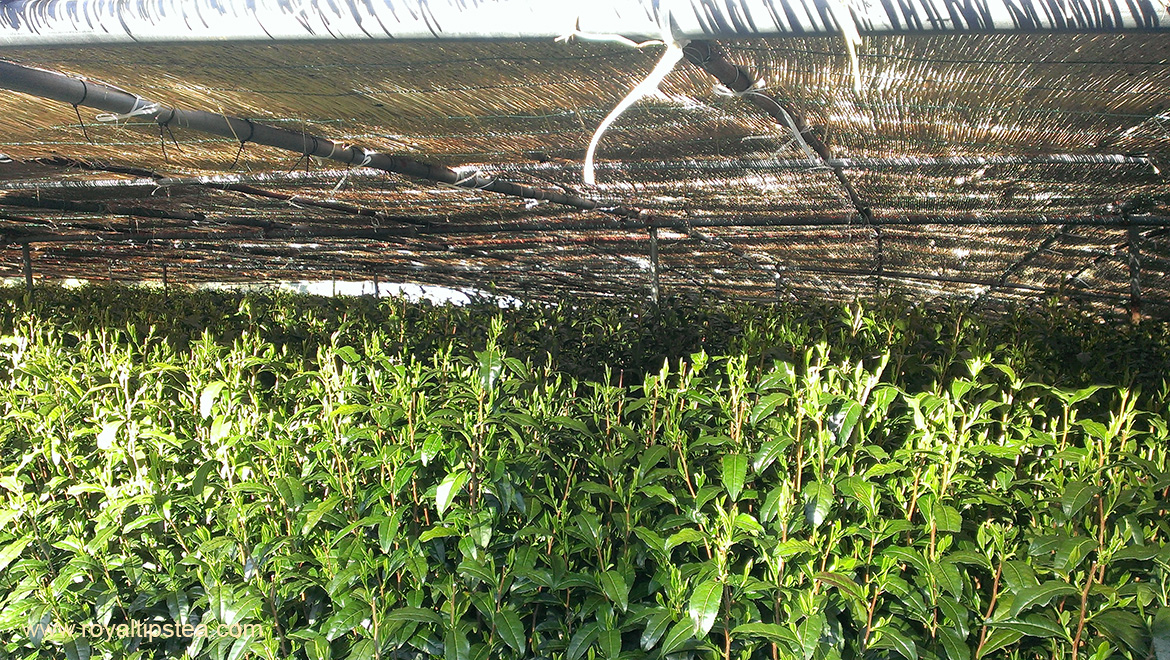
The idea of covering the bushes evolved when tea producers were trying to protect their bushes from frost; they found that if the bushes were shaded, the tea had a much sweeter, umami, more brothy taste. This is because, when tea bushes are grown in restricted sunlight, the leaves retain more of the sweet-tasting amino-acid called L-theanine, and develop fewer bitter-tasting polyphenols. The more the sunlight is cut out, and the longer the period of shading, the higher the level of L-theanine, and the sweeter and umami the taste of the tea. Shaded teas also contain more chlorophyll and caffeine.
Some Sencha teas are shaded by the ‘jika-gake’ method and are therefore a better quality, more umami and sweeter than unshaded Senchas.
Gyokuro (meaning ‘jewel dew’, ‘jade dew’ or ‘precious dew’)
Gyokuro is considered the very best of Japanese teas and is brewed with more leaf than usual to the amount of water. It is a very special tea and is drunk in small quantities from small tea bowls on special occasions. It is shaded for 21 to 28 days by the ‘tana-gake’ framed canopy method and is picked by hand in late April and early May, at the beginning of the season. It is usually processed by hand using the ‘temomi’ (meaning hand-rolled) method on a special heated table called a hoirou table.
Tencha (meaning ‘mortar’ or ‘grind’)
The name of this very special tea refers to the fact that Tencha is ground to make Matcha, the finely powdered green tea that is whisked into hot water and served at a Japanese Green Tea Ceremony. Tencha is shaded in the same way as Gyokuro and is picked, processed and dried in the early part of the season. All the stalks and fibres are removed from the dried tea so that, when it is ground to make Matcha, it is only the finest fleshy part of the leaves that are used. The grinding must be carried out very slowly in traditional stone mills and only 40 grams of matcha is made in one hour. If the grinding process is speeded up by more modern methods, there is a risk that the tea will be damaged by the build up of heat.
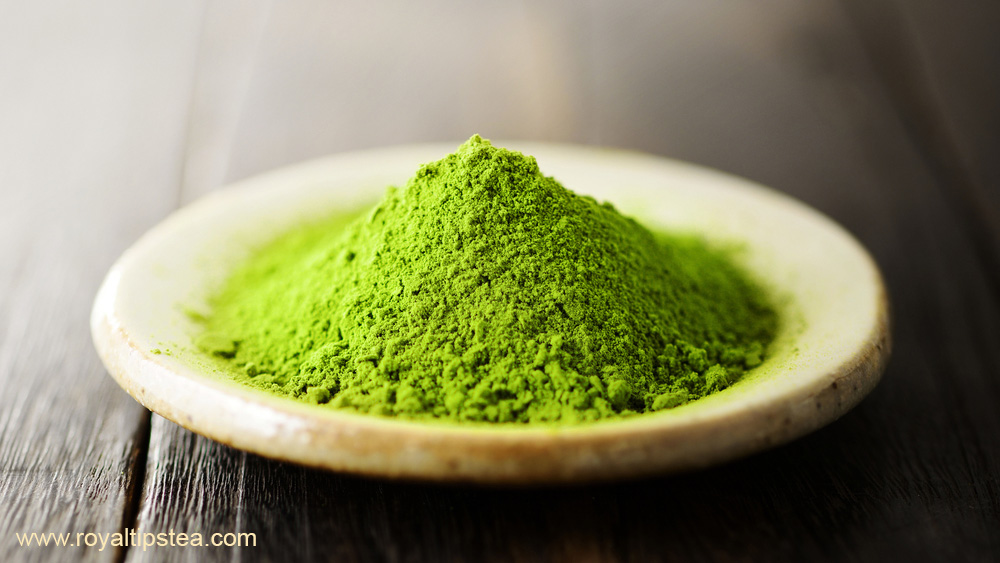
Karigane (meaning ‘cry of the wild goose’ or ‘wild goose’)
Karigane is the stems, stalks and twigs that have been separated from Gyokuro or shaded Sencha. This tea therefore has a sweet, brothy and umami character. The name comes from the fact that the small pieces of stalk that float in the tea while it is being brewed look like pieces of driftwood that provide a welcome resting place for wild geese during their migratory journey each year.
Kukicha (meaning ‘twig tea’)
Kukicha is the stems, stalks and twigs that have been separated from Sencha or Bancha leaves; it has not been shaded and is a lower grade tea.
Kamairicha (meaning ‘the tea of the pan’)
Kamairicha is a panned tea, rather than the more common steamed tea made in Japan. Japan learned how to make tea from the Chinese and so when the Chinese steamed their teas, the Japanese copied; when the Chinese started to pan their teas, Japan did the same, but then developed their own way of steaming the leaves in the 18th century and Sencha was born. Tea and knowledge about processing tea arrived into Japan from China through the south western area of Kyushu, the closest region to the Chinese coast, and it is in that region that processors have kept to their old traditional ways and still make panned green teas.
Tama Ryokucha (meaning ‘coiled green tea’; also called ‘Guricha’, meaning ‘curled tea’)
This tea can be steamed or panned and, instead of being rolled into shiny flat needles like most Japanese teas, it looks more like a hand rolled Chinese tea. Most of these teas are made in the Kyushu region
Hojicha (meaning ‘roasted tea’)
Hojicha is made from a steamed green tea (an ordinary Sencha, Bancha or Kukicha) that is roasted. This turns the leaves to a mid brown colour, gives the tea a mellow, toasty, nutty flavour and reduces the amount of caffeine in the tea.
Genmaicha (meaning ‘brown rice tea’ or toasted white rice tea’) sometimes called ‘popcorn tea’)
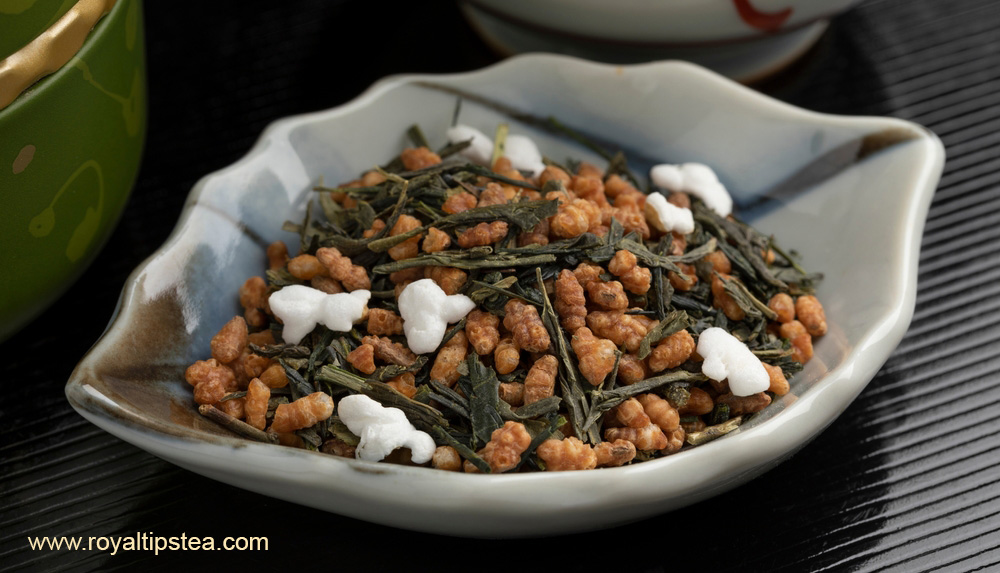
Genmaicha can be made using an ordinary Sencha, or Bancha, or Kukicha green tea to which is added roasted popped rice. ‘Genmai’can refer to brown rice or toasted white rice. One story about how it came to be made tells that in the 15th century, a servant who had stolen some rice from his master and hidden it in his sleeve, accidentally dropped some into his master’s bowl of tea. His master was very angry and is said to have immediately beheaded his servant, but then sat down to drink his tea and found that he really liked it.
Another story says that in the early 20th century, tea merchants combined their green tea with rice to make it go further during times of poverty. To make this kind of tea, the rice is soaked in water, steamed, dried, roasted and cooled. During the roasting some kernels of rice pop and so the tea is sometimes known as popcorn tea.
Matcha iri Genmaicha (also Genmaicha Matcha-Iri)
This modern mixture of Genmaicha with powdered green matcha was introduced a few years ago as a reaction to the rapidly increasing interest in matcha and its high levels of health benefits. The blend adds the pleasant nutty, toasty flavour of the Genmaicha to the slightly bitter flavour of the Matcha and makes it more palatable.
The post All about Japanese teas first appeared on Blog Royal Tips.
]]>The post Masala Chai Tea: History, Ingredients and Benefits first appeared on Blog Royal Tips.
]]>The History of Chai Tea
The most famous and popular type of spiced milky tea is the version made in India and the popularity of the drink seems to have grown during the 19th century when the British established and developed tea cultivation in Assam and Darjeeling in the north east, and in the Nilgiri Hills in the south west of the country. Although large quantities of black tea, made in those regions, was being shipped back to Britain for consumption there and elsewhere in the west, the Indians themselves did not drink much tea.
A campaign in India by the Indian Tea Association, a British owned tea promotional body, to encourage the consumption of tea within India, helped to increase sales and led to businesses being set up by a growing number of ‘chai wallahs’ or brewed tea merchants. Since the British by that time were drinking their black teas with milk and sugar, the same became popular in India, but many of the tea vendors also began to add locally grown spices such as nutmeg, cloves and cardamom.
It is possible that the use of spices developed from ancient ayurvedic medicinal recipes that used different spices for their various health benefits.
Traditional Recipe and Ingredients
Today chai is popular all over India, sold from stalls in the street and brewed at home. Modern recipes usually include strong black tea, milk, sweetener of some kind, and a mix of spices. These ingredients are boiled up together until all the flavours develop and balance with each other to create a wonderfully rich, warming sweet, spicy and invigorating, comforting drink.
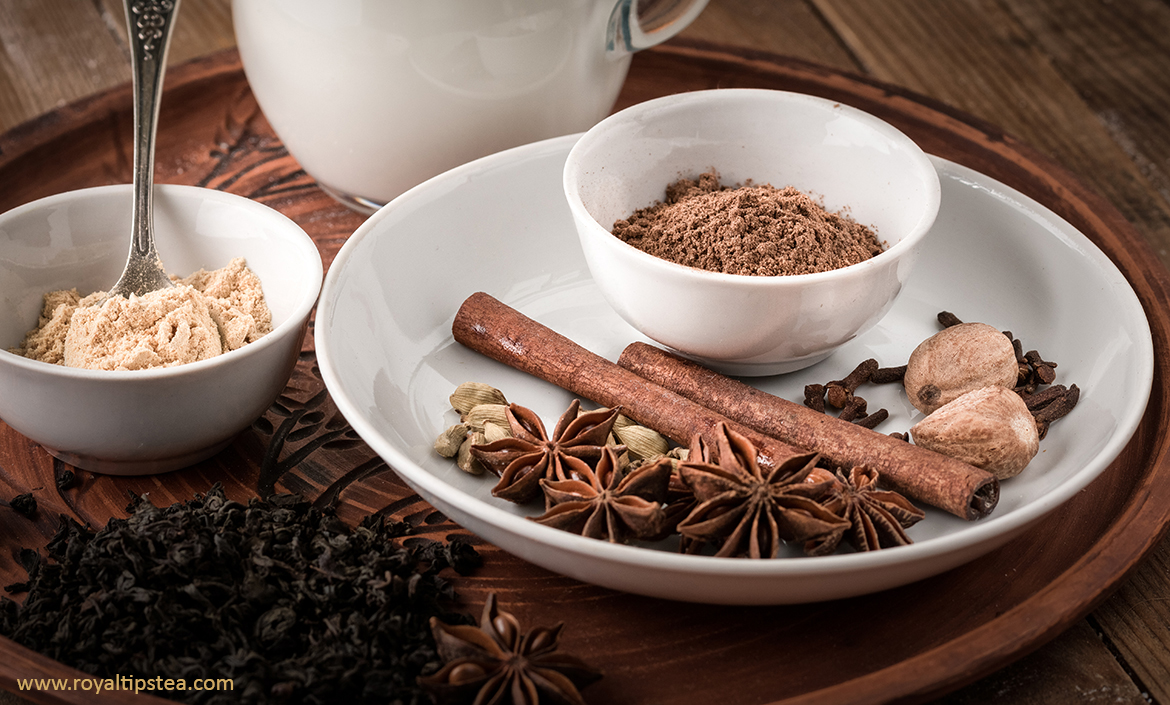
In the north of India, the black tea used is usually strong black Assam CTC, while in the south a Nilgiri CTC or broken black grade is the base tea. The tea needs to be really robust and full of flavor so that it is not overwhelmed by all the other strong tastes and aromas.
The milk used in India is traditionally water buffalo milk but in other parts of the world it is usually cow’s milk. The milk is usually mixed one part milk to two, three or four parts water. Some people use evaporated or condensed milk to give extra sweetness. Any kind of sugar (soft brown, demerara crystals, syrup, honey, palm sugar or cane sugar) can be used and in India, many people use jaggery, an unrefined sugar made from sugar cane juice or palm juice and then reduced to give a very rich sweet flavor.
In India, the spice mix, called ‘karha’, varies according to region, vendor or household and if you ask for the recipe, everyone will tell you something different. The traditional ingredients usually include grated fresh root ginger, green or black cardamom, and black pepper, but different merchants might also add cloves, nutmeg, mace, cinnamon, start anise, and fennel seeds. In the south, fresh basil leaves are sometimes used and occasionally the blend will also add chilli powder, cayenne pepper, cumin, rose petals, a little salt, or liquorice root. In Western India, the recipe rarely includes cloves and black pepper, and in Kashmir, green tea is used instead of black and the ‘karha’ spice mix uses more subtle flavours such as almonds, saffron and cardamom.
Chai wallahs and people at home in India usually make up their own mix of flavourings, whereas commercial mixtures sold in grocery stores usually restrict the number of spices to fewer traditional ingredients.
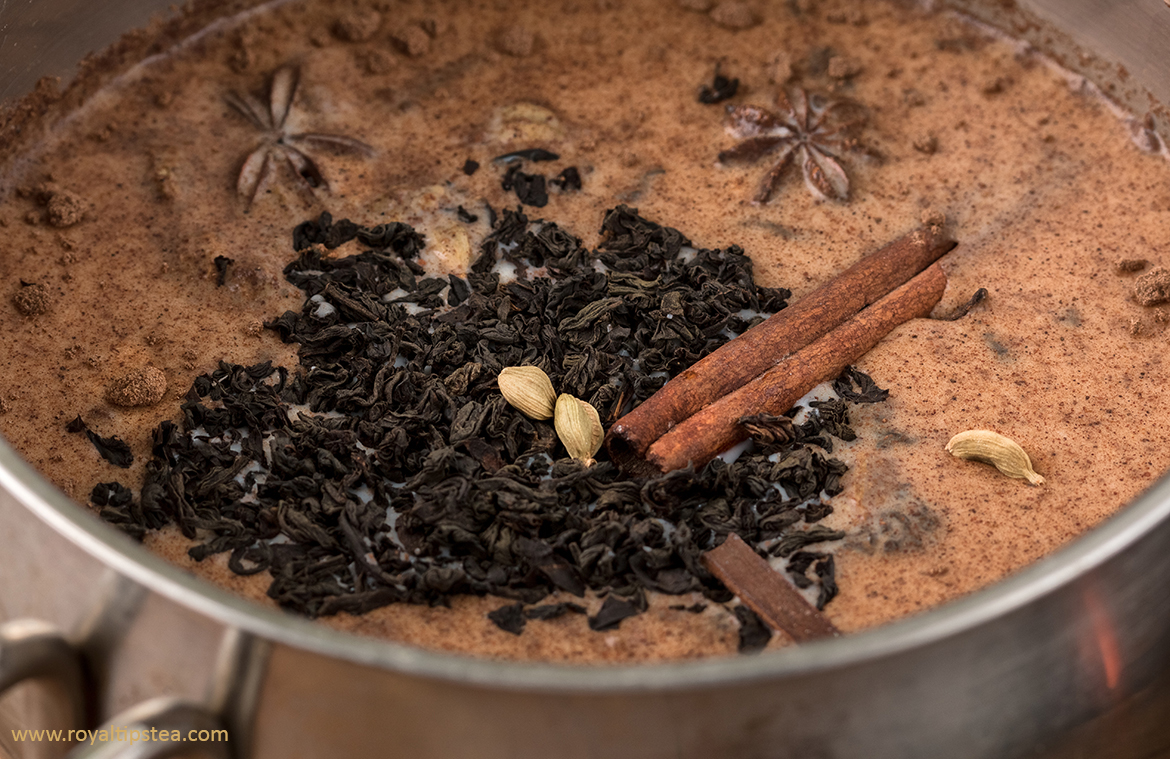
To prepare a good chai, everything is put into the pan together to allow the spices and the tea to fully infuse their flavours and strength into the brew.
At street stalls, once the liquids have been brought to the boil, the pan or kettle is set to simmer and when ready, the solids are strained off and the thick, sweet beverage is served in little handleless, unglazed terracotta clay cups called ‘kulhars‘. These are cheaply made and the intention is that, once the customer has drunk the chai, the cup is smashed on the ground, returning it to the earth in pieces of broken earthenware with the result that no plastic or paper cups are left littering the streets.
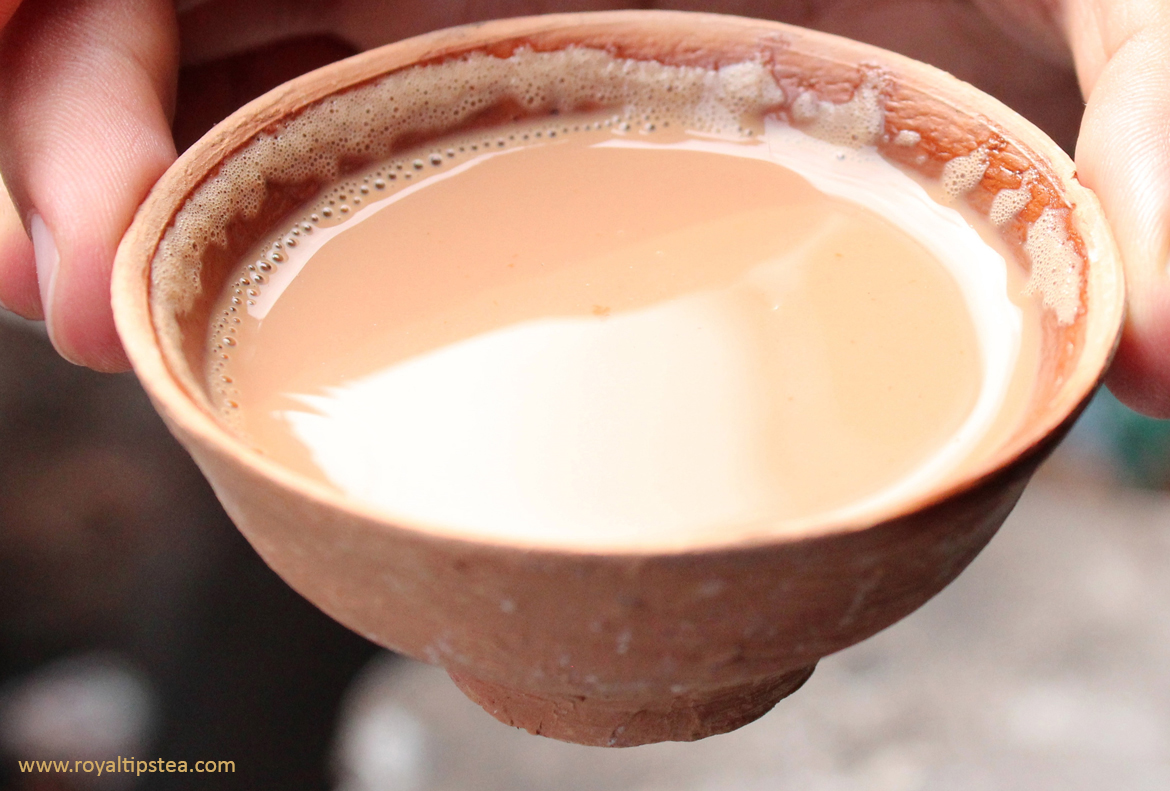
Masala chai is also popular in East Africa, Qatar, Kuwait, Saudi Arabia the United Arab Emirates, where it is known as ‘chai karak’.
Over the past 15 to 20 years, chai has become more and more popular in the West where companies offer a range of concentrated tea-based syrups that are designed to be diluted with hot water or milk; teabag blends that mix black tea, rooibos or yerba mate with a selection of spices and are designed to be brewed in hot water; ground spice mixtures that can be added to a cup of tea after it has been brewed; soluble granules for stirring into hot water rather like instant coffee granules; and unsweetened iced-tea powder for adding to a blend of spices, sugar and milk.
The beverage can be served hot or iced, and some café and restaurants even offer an additional shot of espresso coffee and call the resulting brew ‘java chai’ or ‘Dirty Chai’. Recent health trends have also led to brands offering turmeric chai and matcha chai.
Benefits of Chai Tea
As well as giving hot sweet milky tea its invigorating, warming and comforting spicy character, the individual spices in the mix are also thought to offer wide a range of health benefits.
Cloves, cinnamon and ginger are all thought to have an anti-inflammatory effect and can therefore be helpful against rheumatoid arthritis and other conditions that cause swelling of the joints. Cloves are also said to boost the immune system, have antibacterial properties, protect the liver, and help control diabetes.
Cinnamon is a source of antioxidants, also helps fight diabetes, infections and viruses, and protects the teeth.
Ginger stimulates the circulation, helps cure nausea, motion sickness and upset stomachs. It may also help indigestion, reduce blood sugar and cholesterol levels and protect against heart disease.
Cardamoms are related to ginger and may also help indigestion, calm nausea, clean the kidneys, and stimulate the appetite.
Black peppercorns stimulate the taste buds, have antibacterial properties, can help against weight loss, and are also said to improve brain function.
Fresh basil, so popular in southern Indian versions of the brew, are also said to act as an anti-inflammatory herb, to have antibacterial and anti-microbial properties, combat stress and fight depression.
The tea, of course, also delivers antioxidant polyphenols into the body and a beneficial dose of L-theanine that produces alpha waves in the brain and calms mental and physical stress.
No wonder this deliciously satisfying nourishing and uplifting drink is becoming so popular around the world.
The post Masala Chai Tea: History, Ingredients and Benefits first appeared on Blog Royal Tips.
]]>The post The Story of Earl Grey, Bergamot Flavoured Tea first appeared on Blog Royal Tips.
]]>Earl Grey Tea Legends
There are many different stories about the origin of the blend but it is doubtful that any of them are true. Some say that Earl Grey himself travelled to China where he was presented with a recipe for black tea scented with bergamot by an important Chinese official; or perhaps by a Chinese tea master.
Other versions of the legend say it was a group of British diplomats who travelled to China and were given the recipe for the Earl after one of the diplomats had rescued an important official from drowning, or perhaps it was the official’s son.
Whether these tales have any truth in them is something we shall almost certainly never know, but it is commonly believed that the tea was named after Charles Grey, 2nd Earl Grey, who served as British Prime Minister from 1830 to 1834 and is said to have been given, at some point, a blend of black China tea flavoured with bergamot, a citrus fruit that is thought to be a hybrid of sweet lime and bitter orange.
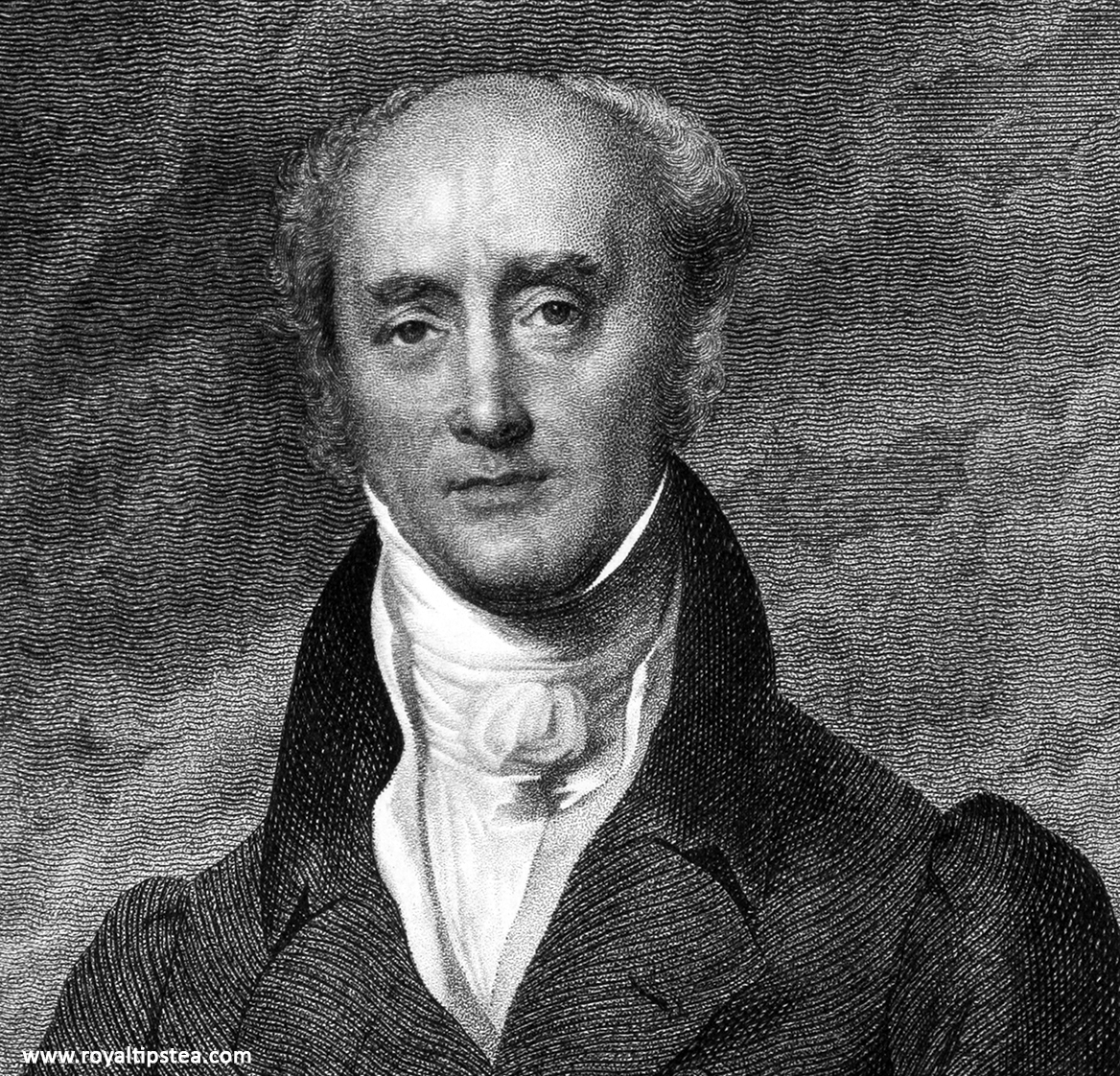
Bergamot is today cultivated in southern Calabria in Italy, in South America, Morocca, Tunisia and Turkey, and came originally from such countries as Vietnam, Myanmar, Laos, Cambodia, Malaysia, and Indonesia in South East Asia, but not from China. So it is unlikely that a Chinese tea master would have used it in a tea blend or that any recipe coming out of China would have included it.
Directors of the East India Company, a modern retail business that uses the old name of the famous British trading company from the 17th, 18th and 19th century, claim that their Earl Grey follows the original recipe. They claim that the tea was first written about in the 19th century by George Staunton a botanist who worked for the East India Company and claimed to have seen tea being scented with neroli (bitter orange blossom).
Back in Britain, neroli was not available at that time, and so the East India Company claim that bergamot was used instead to replicate the aromatic notes of the orange blossom. The Staunton Earl Grey (names after George Staunton) sold by the East India Company today, includes both neroli and bergamot in the recipe.
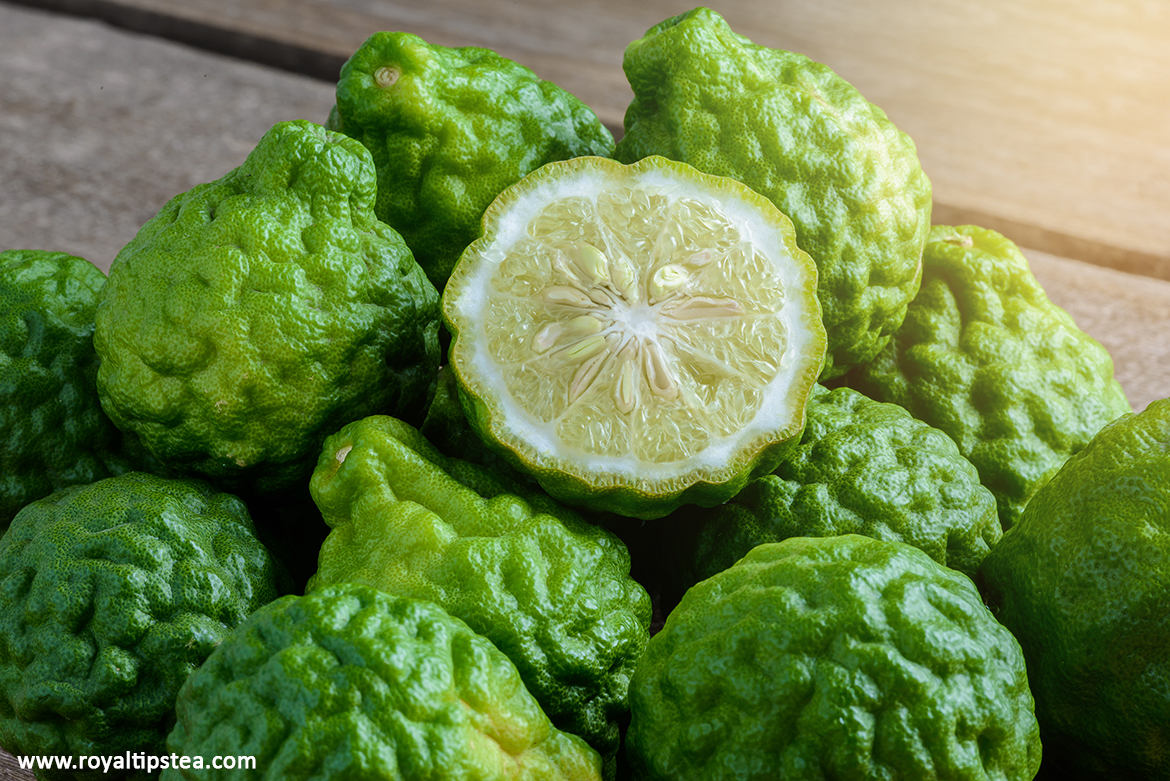
The first evidence of sales of a bergamot-scented black tea blend in Britain dates back to 1824, six years before Earl Grey became Prime Minister. In 1836, Jacksons of Piccadilly, who claim to have the original recipe, introduced it “to meet the wishes of a former Earl Grey”, so perhaps Charles wasn’t involved at all and it was his father’s name that was used.
In the 1850s, a ‘Grey’s Tea’ was advertised by Charlton & Sons of St James’s London. The Grey family, Charles Grey’s descendants, have more recently suggested that black tea was blended with citrus bergamot to suit the very hard water at Howick Hall in Northumberland, the family’s ancestral home, and the water in London, where Charles Grey obviously spent a lot of time since he was involved in national politics. The rationale behind the use of bergamot would have been based on the fact that a few drops of juice from a citrus fruit stops hard water (containing high levels of limescale) from becoming cloudy, and also prevents a scum from developing on the surface of the tea.
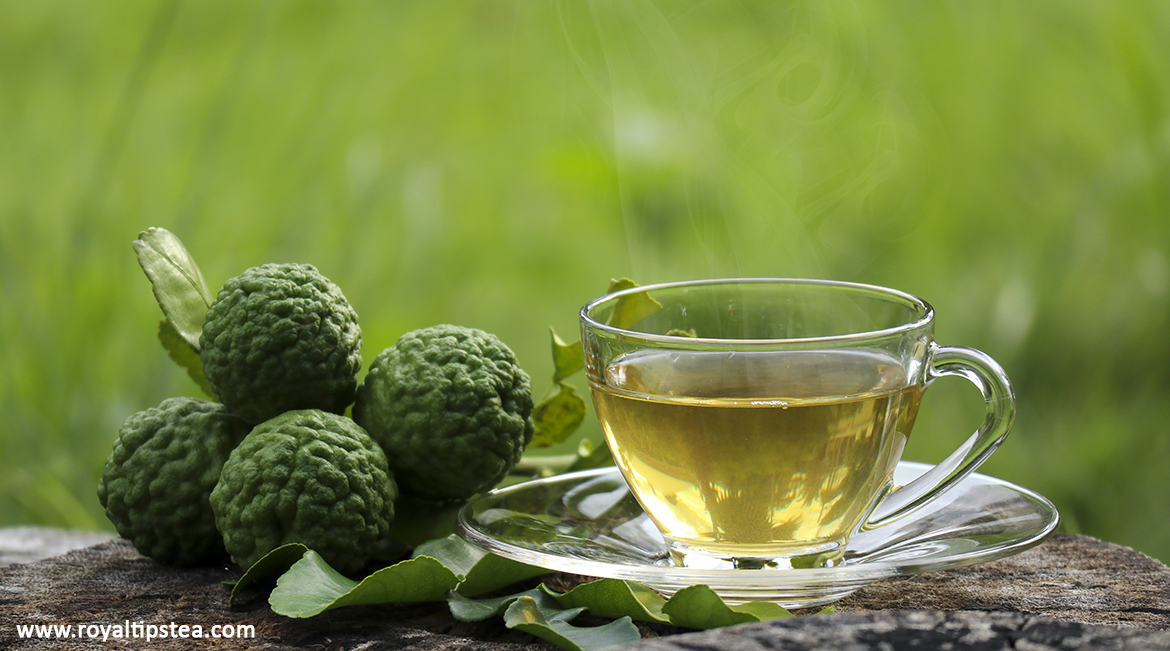
Varieties and Ingredients
Since the days of those early recipes, Earl Grey blends created by different companies today use Ceylon, South Indian or China black teas as the base, and even sometimes choose green, white or oolong teas. The flavouring ingredients always include natural or artificial bergamot oil, and sometimes also add other citrus fruits such as orange, lemon, clementine, mandarin or lime, and other visually attractive ingredients such as cornflower blossoms, sunflower petals, or pieces of dried citrus peel.
Different companies will continue to invent new recipes for this famous tea but two elements will no doubt remain constant. Bergamot will always be included in the list of ingredients and tea drinkers will continue to discuss the origins and history of the blend.
The post The Story of Earl Grey, Bergamot Flavoured Tea first appeared on Blog Royal Tips.
]]>The post A Guide to Ceylon Tea Tastes and Growing Regions first appeared on Blog Royal Tips.
]]>Often referred to as “The Pearl of the Indian Ocean”, the island of Sri Lanka (former Ceylon) has been growing tea for more than 150 years. Lying close to the equator, the country’s benign climate allows the tea plants to push out their new leaf shoots all year long.
In the southern mountains, the contours of the hillsides are covered in every direction with undulating fields of tea, punctuated by tumbling waterfalls and plunging rivers, rugged outcrops of rock, elegant palm trees, bamboo stands and dense thickets of forest pines.
From the steamy south-western coastal plains, the tea gardens scramble up to altitudes of 1800 metres (6000 feet), ), where temperatures are cooler and misty clouds swirl gently around the highest peaks, protecting the tea from the glaring sunlight and bringing essential moisture to the plants.
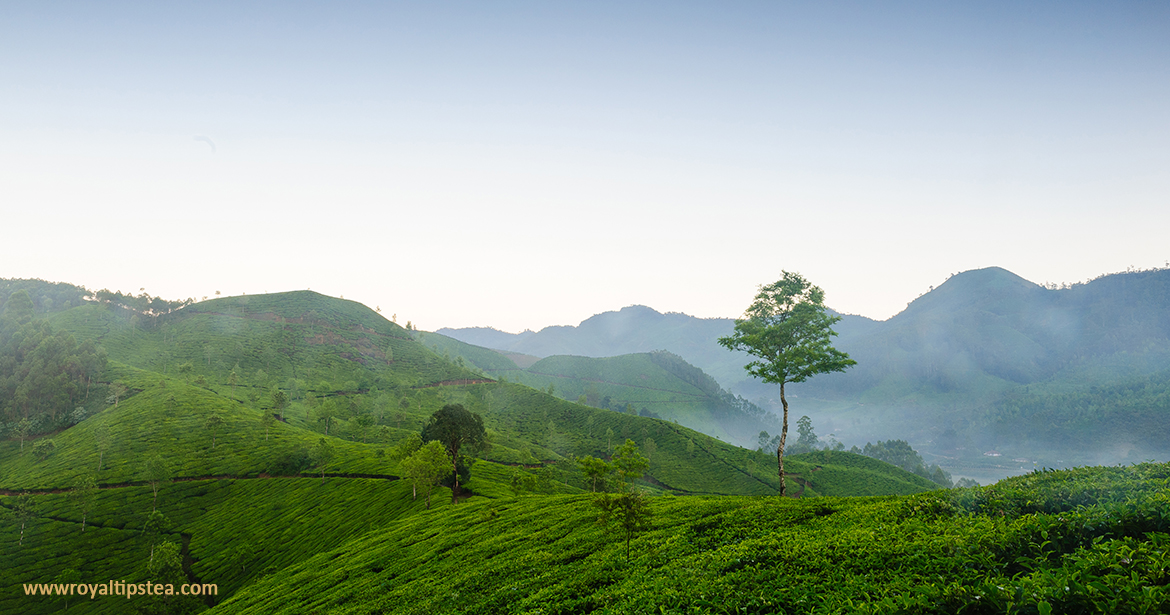
Ceylon teas are categorized by three different altitudes:
• Low-grown teas (from sea level up to 2000 feet)
• Medium-grown teas (between 2000 and 4000 feet)
• High-grown teas (above 4000 feet)There are currently seven tea growing regions in Sri Lanka:
Ruhuna, Sabaragamuwa, Kandy, Dimbula, Uva, Uda Pussellawa y Nuwara Eliya.
Each region produces teas with unique tastes and distinctive aromas.
Low-grown teas – Ruhuna and Sabaragamuwa
The climate in the low-growing regions of Ruhuna and Sabaragamuwa is hot and humid with plentiful rainfall throughout the year, and the bushes confidently produce a regular crop of new leaf buds. The majority of the teas grown here on the lower slopes are processed as Orange Pekoes (OP) and Flowery Orange Pekoes (FOP).
Their beautiful leaves are wiry, neatly-twisted, jet-black, and often mingled with silver or golden buds.
They brew to give rich red liquors that are full-bodied, powerful, juicy and strong, with hints of honey and chocolate.
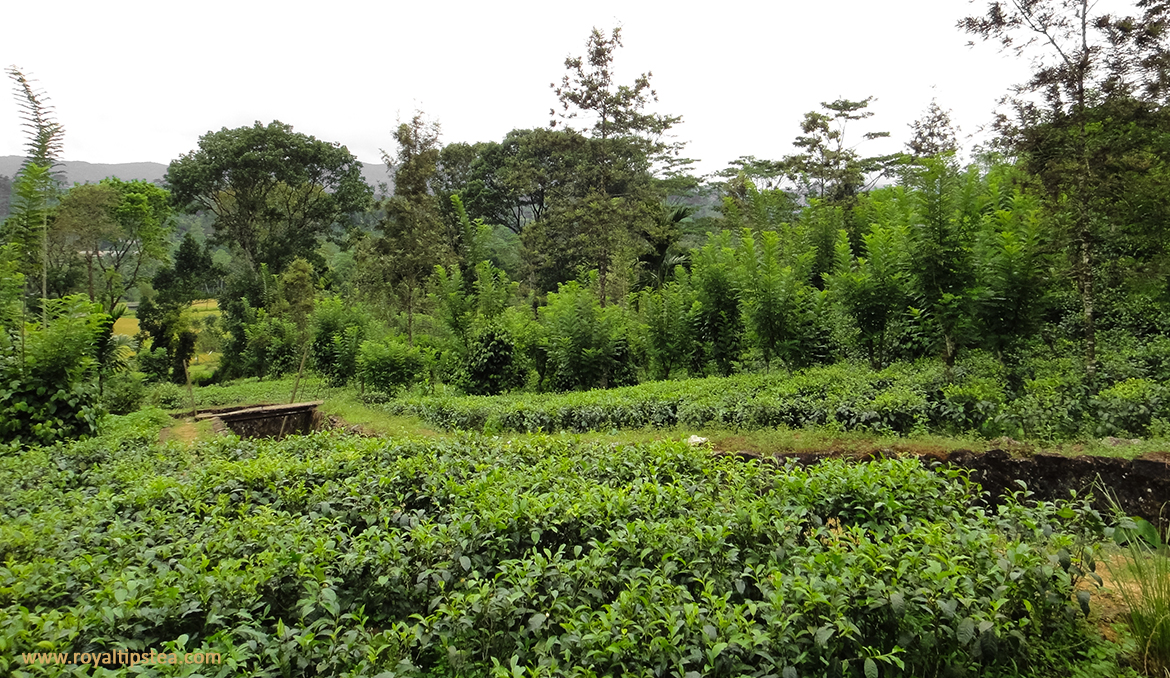
Medium-grown teas – Kandy
The ancient town of Kandy, once the island’s capital before Colombo took over that role, nestles in a valley on the western side of the Central Highlands. A beautiful and privileged place blessed with a generous nature.
A world heritage site declared by UNESCO in 1988, it was in this region that the first Ceylon tea gardens were established.
A Scot named James Taylor was working at Loolecondera Coffee Plantation in the 1850s when his employers encouraged him to diversify and try growing tea as well.
When his first tea plants thrived, he planted out a further 20 acres and, with little knowledge and no processing machinery, he started making black tea by hand on the verandah of his house and gradually developed his own machinery.
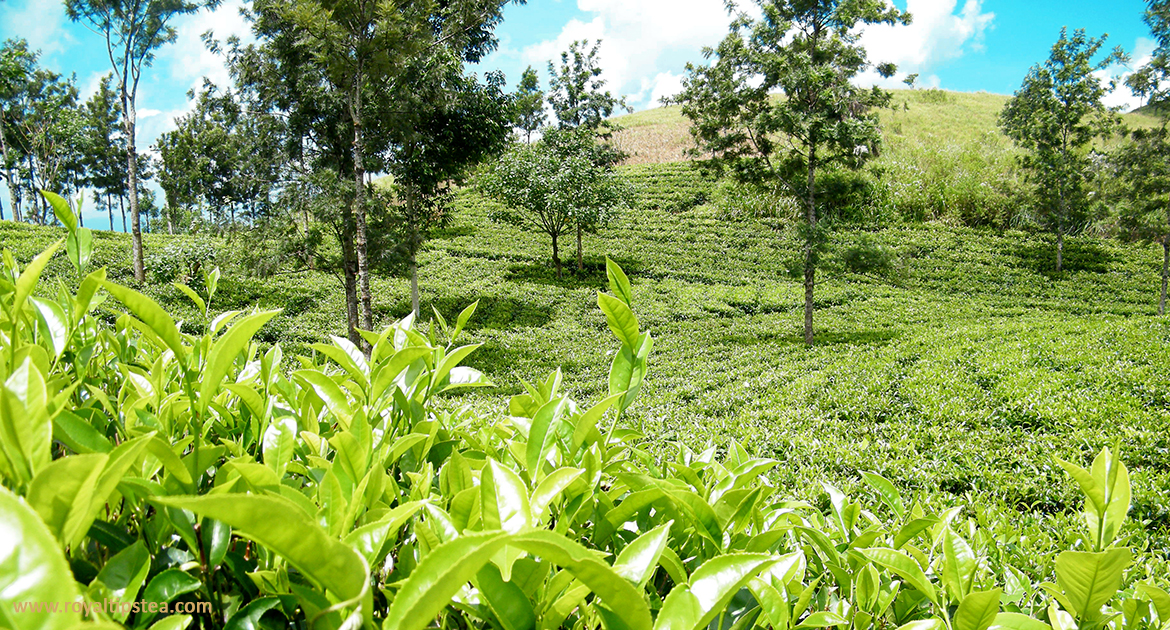
In 1873, he sent 23 lbs of black tea to London, where it was sold to great acclaim in the London tea auctions.
When Ceylon’s coffee crop was devastated by a virus in the early 1870s the coffee planters around Kandy were encouraged by Taylor’s success and started growing tea instead.
By 1890, Ceylon had become a very important tea producing country.
Large-leafed Kandy teas are strong and full-bodied, sometimes malty, while the smaller grades are more delicate and subtle.
High-grown teas – Dimbula, Uva, Uda Pussellawa and Nuwara Eliya
Sri Lanka has four high-growing regions (Dimbula, Uva, Uda Pussellawa and Nuwara Eliya), and the tea plants grow amongst mountain peaks that soar upwards to an altitude of more than 2500 metres (8281 feet).
Dimbula
Dimbula’s tea gardens sweep across the western slopes of the mountain range and clamber upwards though steep craggy hills and mountain passes towards the high Nuwara Eliya plateau.
Heavy monsoon rain gushes into the area from June to September and during those misty, warm months, the teas are full of flavour and aroma.
When the weather is cooler and dryer at other times of the year, the peak quality teas are lively, bright and fresh, with hints of oak, cypress, spice, citrus fruits, roses and jasmine. The higher the estate, the fresher and brighter the teas.
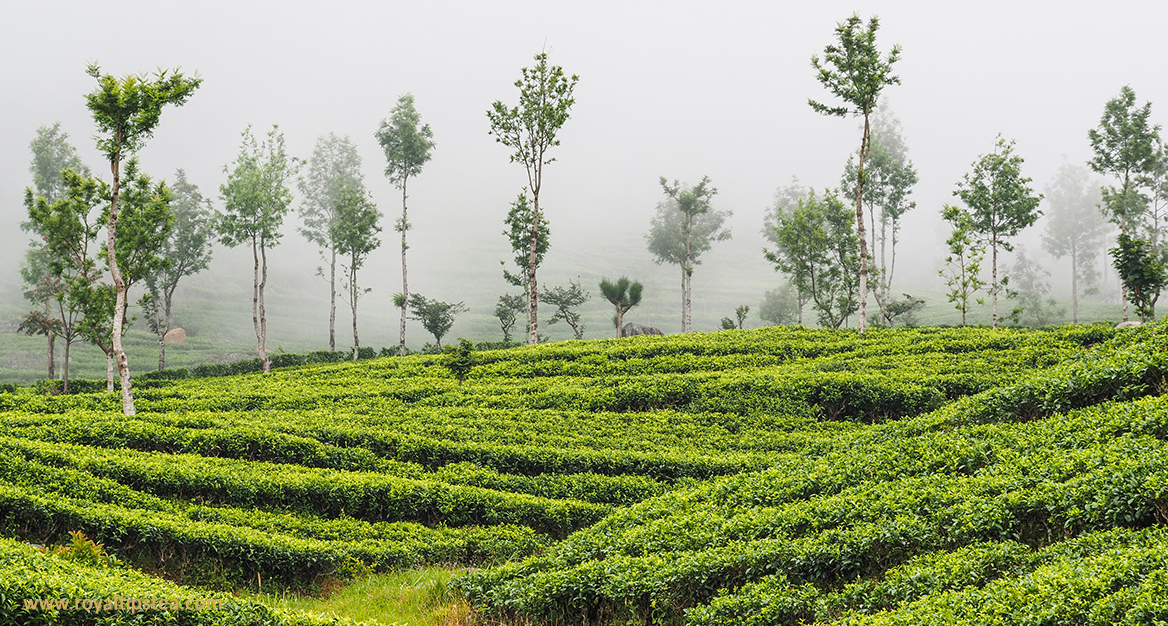
Uva and Uda Pussellawa
On the eastern side of the mountain range lie Uva and Uda Pussellawa, where the weather alternates between a period of heavy rain and high temperatures from October to June and a cooler season from July to September, when a powerful drying wind blows through the region.
The dessicating wind upsets the plants’ normal photosynthesis, and the contrast between cool nights and warm days causes a chemical change in the tea bushes.
The two factors together give the tea liquors a unique ‘wintergreen’ character.
During this period, the manufacturers change their style of processing (rolling the leaves more heavily and making smaller grades) to capture this prized medicinal taste and aroma.
Nuwara Eliya
The highest of all Sri Lanka’s teas grow in Nuwara Eliya, established as an important tea growing region in the 1870s.
The high altitude and the cool, sometimes frosty, air produce fine teas that are delicate, aromatic, subtle and complex.
The new leaf buds develop slowly and distill some of the aromas carried by the mountain breezes (eucalyptus, cypress and wild mint).
The golden sparkling liquors suggest ripe plums, spices and citrus fruits.
La elegancia y la delicadeza de té de Nuwara Eliya lo convierten en el favorito para beber todos los días.
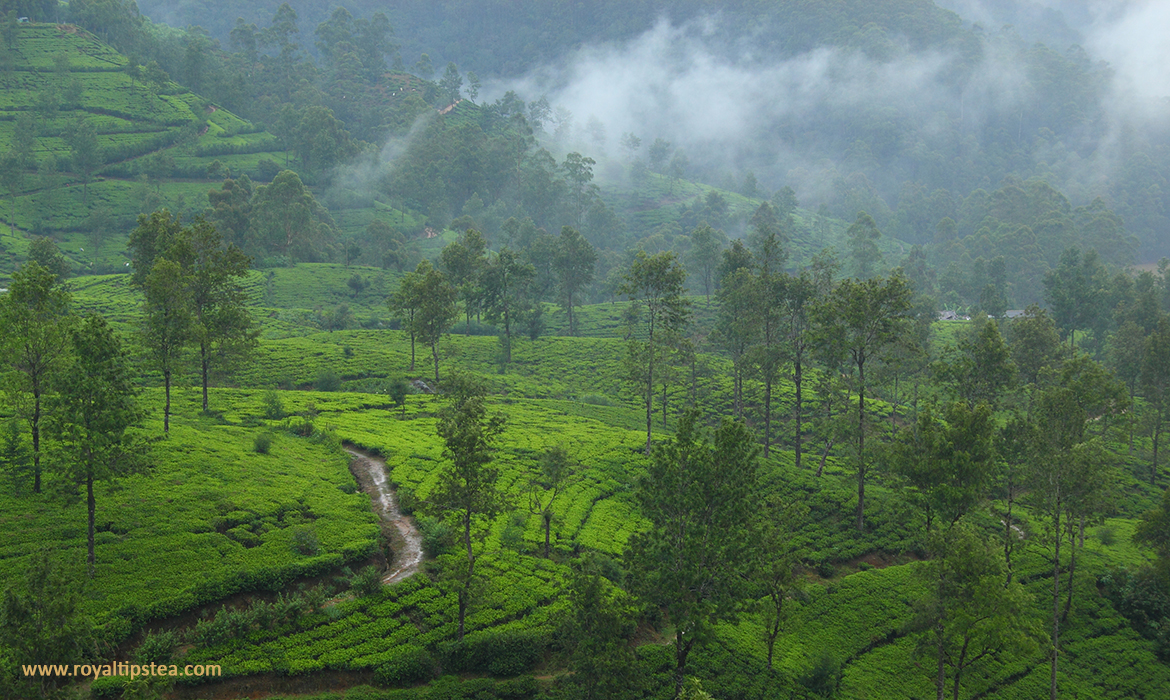
The post A Guide to Ceylon Tea Tastes and Growing Regions first appeared on Blog Royal Tips.
]]>The post Da Hong Pao, The Most Expensive Tea in the World first appeared on Blog Royal Tips.
]]>In 2002, 20 grams of Da Hong Pao (Big Red Robe) tea was sold for 180,000 yuan – equivalent to almost US $28,000. That works out at $1400 for 1 gram of the loose leaves and more than US$10,000 to brew a pot, and it makes this beautiful oolong the most expensive in the world.
Oolong translates as ‘black dragon’ and the large, twisted, brownish-black dry leaves often resemble dragons or serpents.
What is Da Hong Pao and where does it come from?
This world famous tea is produced in the Wuyi Mountains in the north west of Fujian province, an area that has a very long tea history and which in 1992, were designated a UNESCO World Heritage site. The soil in this volcanic mountain range is very rocky and the plants have to wind their roots around the rocks to find the nutrients and water that they need to thrive.
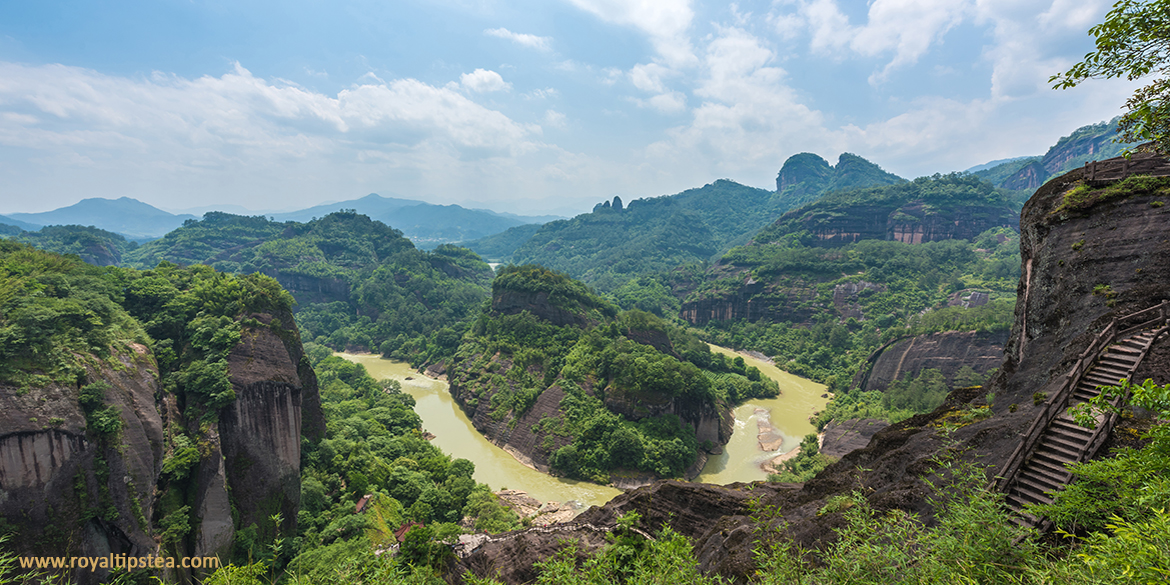
The teas made from their leaves are known as ‘rock oolongs’ or ‘yan cha’ and often have a mineral, almost flinty, wet stone character that is described as ‘petrichor’, a word devised in 1964 to mean the smell of wet earth or stone after rain has fallen (from Greek ‘petra’ meaning stone’ and ‘ichor’, meaning the fluid that flows through the veins of the gods in Greek mythology.
The bushes from which that very expensive Da Hong Pao was made sit high up on a rocky ledge in a narrow gorge surrounded by tall pillars of rock, and no-one, except a small number of designated tea masters, is allowed to approach anywhere near.
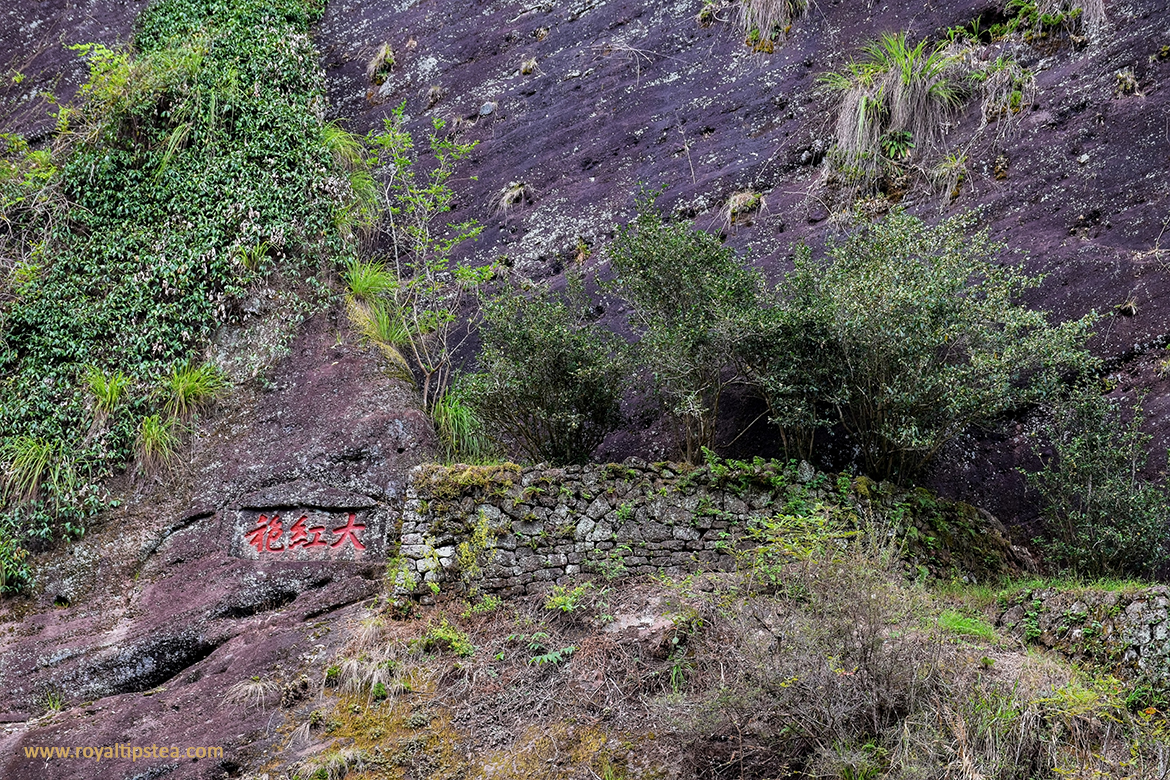
The group of four bushes (some people count 6 to include two bushes that sit slightly below the other four) have been growing here since the time of the Ming Dynasty (1368 to 1644 AD).
They became famous when the mother of a Ming Emperor was cured of an enduring illness by tea made from their leaves and the emperor sent his ‘Big Red Robe’ to cover and protect the precious bushes. Each year, only around 400g of oolong tea is made from those original bushes and it is either presented by the Chinese government to very important visiting dignitaries or it is sold at very high prices.
But not all Da Hong Pao teas cost so much and that’s because, over the centuries, cuttings have been taken from the original mother bushes and cultivated in the surrounding area. But the taste and aroma of tea made from those younger bushes vary according to the specific location where they grow. The soil, weather patterns, temperatures, amount of sun and rain, etc. can affect the way in which the bushes grow and the eventual flavour of the tea in the cup.
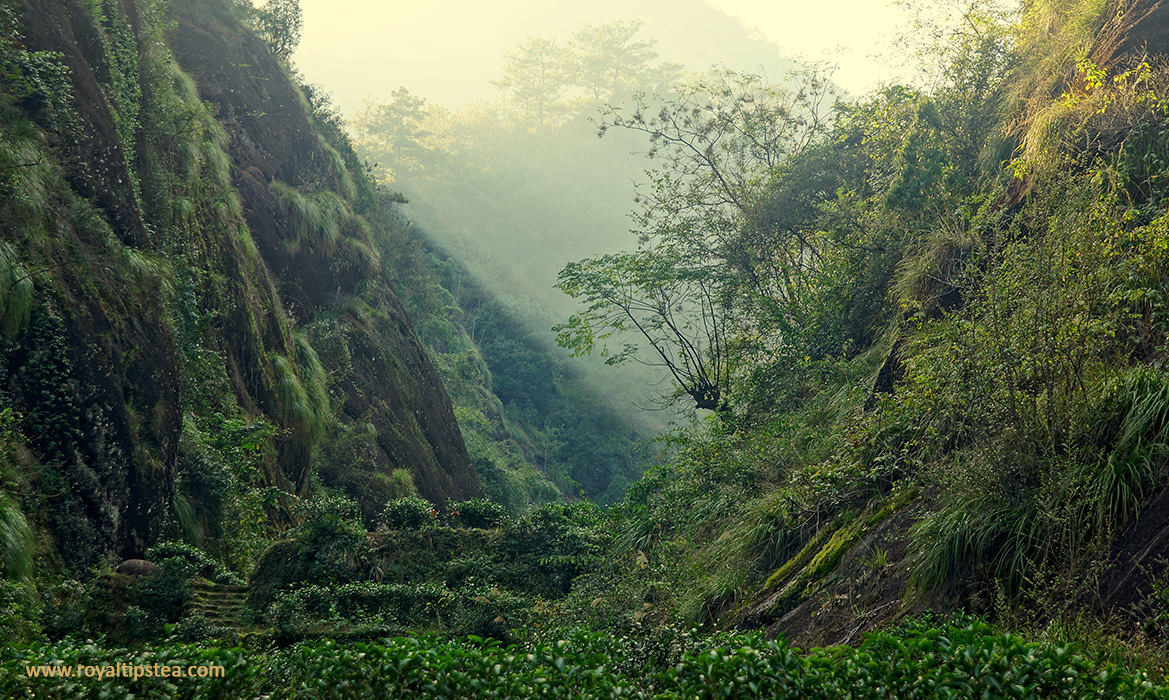
Production of Da Hong Pao oolong tea
This chinese tea is made by the usual dark oolong method.
- Shoots of 3 or 4 open leaves (no buds) are gathered in the late spring and autumn and withered in shady sunlight for about two hours.
- Then they are taken indoors, spread on bamboo baskets, and from time to time shaken, and tumbled inside a bamboo drum to gently bruise the leaves in order to provoke around 30%-40% oxidation.
- When the desired level of oxidation has been achieved, the leaves are panned to stop any further changes in the leaves, lightly rolled to develop the flavour, and then dried.
- When the leaf comes out of the drying process, the colour of the shoots is a mixture of green and brown and the leaves are still attached to the stems. All the stems and stalks are then removed by hand (the reason why only single twisted leaves are visible in the dry leaf of Da Hong Pao).
- Finally, the tea is roasted over charcoal to further dry the leaves and to develop the wonderful characteristic layers of sweet fruity flavours in the top notes and dark roasted hints of dark chocolate, molasses, dates, cocoa nibs and dried fruits.
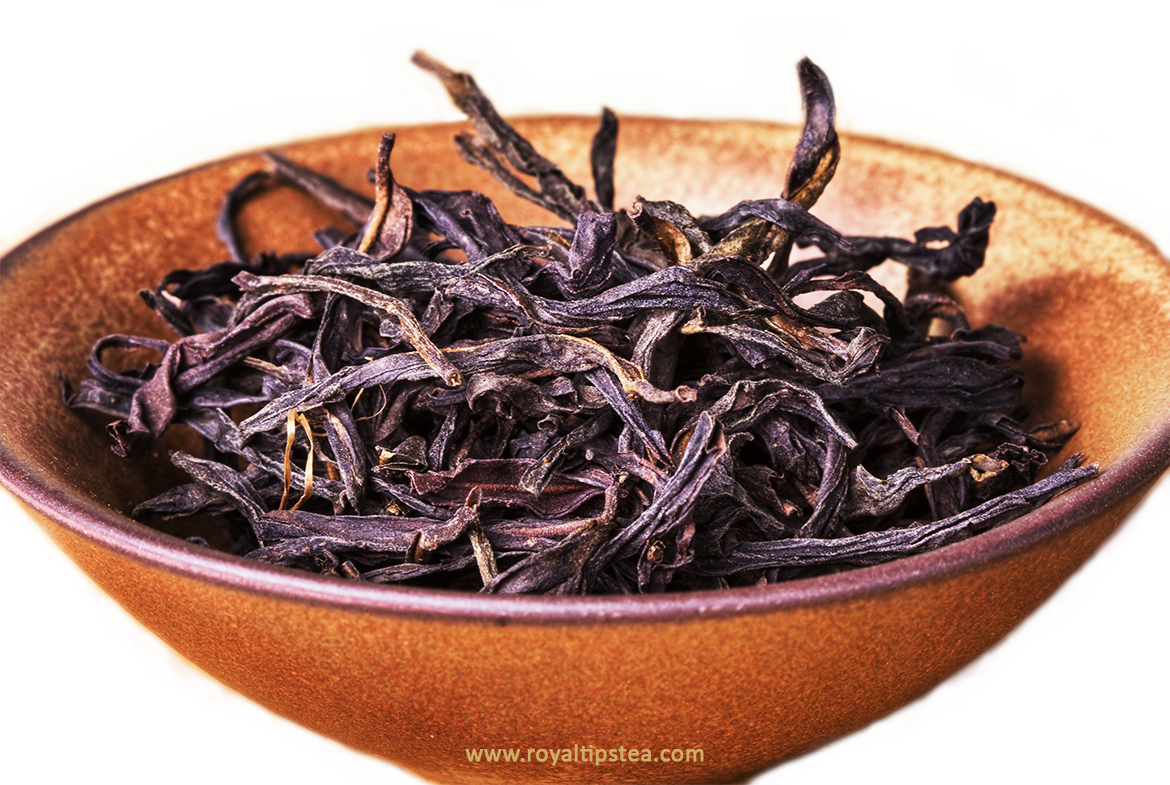
The post Da Hong Pao, The Most Expensive Tea in the World first appeared on Blog Royal Tips.
]]>The post Why do Wild Trees from Yunnan produce best Pu-erh Tea? first appeared on Blog Royal Tips.
]]>All Pu-erh Teas are Assamica Variety
The southern, sub-tropical, forested region of Yunnan province is where the story of tea began. It was here in the humid foothills of the Himalayas that the plant is thought to have first grown thousands of years ago. And, although the small-leafed Camellia sinensis sinensis (Chinese Camellia sinensis) grows in other parts of China, it is the large-leafed Camellia sinensis assamica that grows as a native to Yunnan. It is the same branch of the tea family that is found in northern Vietnam, northern Loas, Myanmar and Assam, for the birthplace of the tea plant – what is often called the ‘Himalayan corridor of diversity’ – includes those regions as well as southern Yunnan.
The ancient wild trees that are so important to the production of quality Puerh teas today are all assamicas. In thick forest areas, where they have been left to grow organically for hundreds of years, they have climbed up and up towards the sky and a few reach heights of 20 to 30 metres. In more open areas, where they do not struggle for light, the trees stretch their branches sideways and look more like large apple trees. Their strong thick trunks are sometimes single, sometimes multiple, and their leaves are long and broad, big enough to stretch from your fingertips to your elbow.
The oldest trees are found in the jungles of Xishuangbanna, which borders Laos and Myanmar, and also in Lincang district, which lies a little further north west on the border with Myanmar, and in Simao district, close to the town of Puerh. People in several of the most famous areas claim to have the oldest, tallest ‘king of trees’ growing on their local mountain.
Classification of Tea Trees according to their Age
The tea trees are divided into three groups – ancient or antique trees, old trees, and new trees.
– ‘Ancient’ or ‘antique’ refers to trees that are over 100 years old and have been left to grow wild, with no cultivation, no fertilization, and no use of pesticides, etc.
– ‘Old’ refers to trees that are between 30 and 100 years old and are usually semi-wild, having been grown from seeds or cuttings from older wild trees and then planted and cultivated in tea gardens.
– ‘New’ refers to young bushes that have been planted much more recently on tea farms and gardens.
The most valued are of course the oldest wild trees for, as they have grown organically, they have pushed their roots deep down into the earth to seek out nutrients and water and have had to struggle to survive. The stress they have experienced in that difficult situation gives the leaves a finer, more subtle, more aromatic flavour than teas from bushes that have not had to work hard to survive.
To gather the new leaf shoots and buds from the oldest wild trees, farmers often have to walk long distances into the forests carrying their baskets on their backs. When they reach the trees, they must climb up into the branches and balance carefully while plucking off the leaves. To protect the quality of the teas from the most precious of the ancient trees, they are usually only picked once a year in the spring, and each tree yields only two or three kilograms of tea each year.
The post Why do Wild Trees from Yunnan produce best Pu-erh Tea? first appeared on Blog Royal Tips.
]]>The post What is English Breakfast Tea first appeared on Blog Royal Tips.
]]>History and Origins of the Classic Black Tea Blend
The history of this famous blend is not clear. Some people say it was invented in the US when British tea merchant Richard Davies settled in New York in the 1840s and created a blend called English Breakfast that replicated the tea that everyone had been drinking back in England. Apparently, it was immediately successful and gained popularity across America.
Others say that the blend was invented in Scotland and named simply ‘Breakfast Tea’ and, when it found favour with Queen Victoria, it became extremely popular. But, whatever the facts about its origin, it is certainly true that the British started drinking more and more black tea in the 19th century once Britain had started producing its own tea in India in the 1830s and in Ceylon (now Sri Lanka) in the 1870s.
Before the first tea gardens in Assam were developed by the East India Company in the mid 1830s, the British imported and drank both green and black teas from China. Tea was an expensive product and became fashionable only amongst the very wealthy.
As it became more popular through the 18th century, more and more upper class people gave up the alcoholic beverages that had previously been served at the start the day and began drinking tea (and coffee) at breakfast. Later in the century, even poorer people started their day with tea, which they drank with simple bread or toast and butter.
Then, during the 19th century, Indian and Ceylon teas were imported at a much cheaper price from British tea gardens and so more and more people could afford to drink tea every day.
Ingredients of English Breakfast Tea
Tea merchants began to blend the new British teas, sometimes with teas from China, and created recipes with plenty of strength, brightness and flavour that British tea drinkers seemed to enjoy first thing in the morning to wake up their taste buds.
In the 1870s, black Keemun teas were first made in China’s Anhui province and became popular in both the UK and the US. In Britain some tea merchants added some of this lovely nutty, sweet, mellow tea to their breakfast blends. Keemun also became very popular in the US as the base for breakfast teas. When Kenya started producing black teas in the 1930s, large leaf Kenyan teas also became a valuable ingredient of breakfast blends.
CTC manufacture was introduced in the 1930s to manufacture small particle teas to meet a growing demand for fast-brewing paper teabags, and tea companies began to add teabag breakfast blends to their range. The typical mixtures consisted of Assam CTC teas for their sweet malty smoothness, Ceylon broken leaf teas for their bright golden character, and Kenya or other East African CTC teas for their powerful strength and rich colour.
Today, cheaper English Breakfast teas are often blended for price rather than taste and may contain poor quality teas from up to 30 different origins, including India, Africa, Indonesia, Malaysia, and Vietnam. But most speciality tea companies still sell excellent-quality, large-leaf English Breakfast blends that consist of ‘orthodox’ teas from the best tea estates in Assam, Ceylon and Kenya. Blends should have a clear bright coppery or rich amber colour, and a warm, smooth, malty taste that is strong enough to take a little milk if preferred.
The post What is English Breakfast Tea first appeared on Blog Royal Tips.
]]>The post The origin of tea first appeared on Blog Royal Tips.
]]>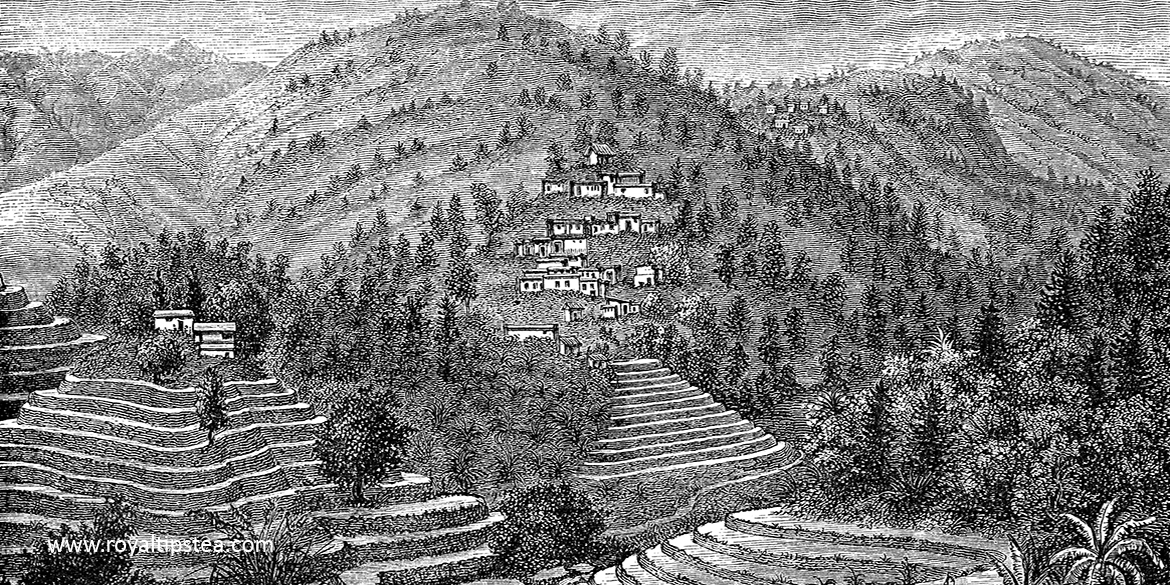
The tea plant, Camellia sinensis, first grew in China’s south western province of Yunnan and in North Vietnam, Northern Laos, Myanmar (formerly Burma), and North East India, that lie to the south and west. Plants do not recognize national borders but thrive where the local conditions suit their needs, and the tea plant found the sub-tropical warmth and humidity that it loves in the Himalayan foothills that are home to those regions.
The benefits of drinking tea are said to have been discovered in around 2737 BC when the herbalist Shen Nong was seated one day under a tree, boiling up some water that he intended to use for infusing different plants. As he waited for the water to come to the boil, the breeze caused a few leaves to drift down into the water from an overhanging branch and Shen Nong liked the aroma that rose from his cauldron. He decided to try the brew, enjoyed the taste, and found himself refreshed, able to stay awake and focused for a long time. Of course, the tree under which he was sitting was a wild tea tree and when he had carried out more experiments he decided that an infusion made from the leaves of this tree were of great benefit. Another story tells how he poisoned himself one day by tasting a harmful plant and fell into a coma, but as he lay unconscious under a wild tea tree, dew collected on the leaves and dripped down into his mouth, reviving him and restoring him to full health.
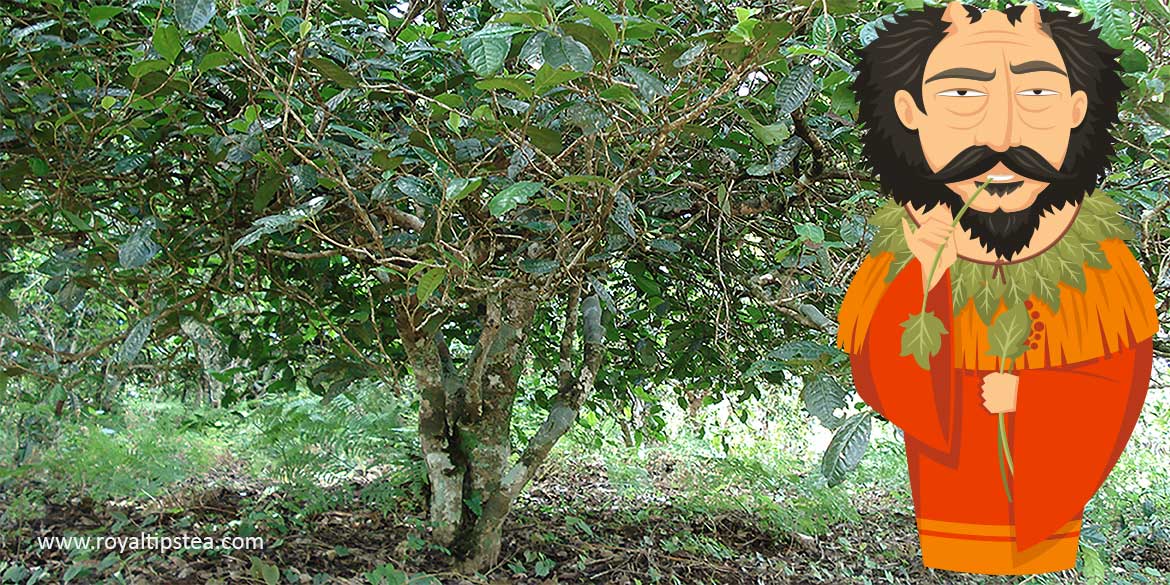
Making tea from wild tea trees
Once the health benefits of drinking tea had been recognized, tea trees that grew in the forests of Yunnan and Sichuan were chopped down and the fresh tea leaves were stepped in hot water. But the Chinese soon realised that if they continued to chop down all the wild tea trees, soon there would be no tea plants left and so they learned to cultivate the plants and to dry the leaves in order to have a stock through the year. To preserve the green leaves, they were first steamed to stop them from oxidizing, then they were compressed into cakes or balls and dried. For brewing, the cakes of tea were baked, broken into small pieces, and infused in boiling water with spices and onions. Nowadays, the tea leaves are compressed into cakes to become Pu-erh, a type of loose leaf tea that is fermented with the help of microbes.
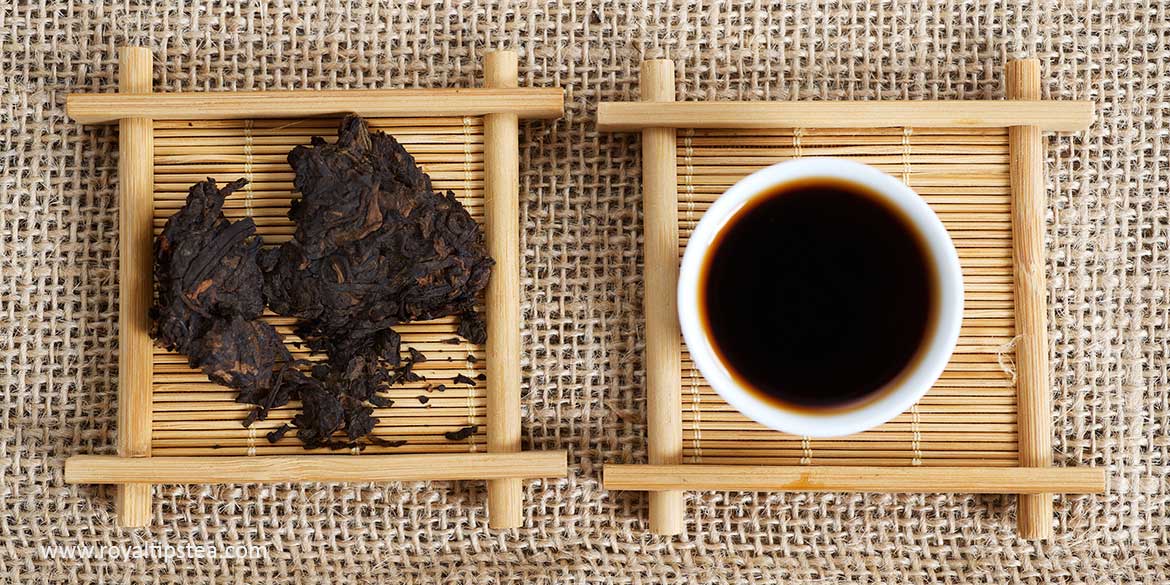
Where does the word “tea” comes from?
The Chinese character ‘cha’ was adopted in the 3rd century AD to mean both the plant and the beverage, but the name went through many guises in different languages until botanists settled on Camellia sinensis (Chinese Camellia) in the early 19th century. In 1712, the German botanist Englebert Kaempfer called it Theae Japonensis; in 1753, Swedish botanist Carl Linnaeus named it Thea sinensis but then reclassified the one plant as two different species which he called Thea viridis (which he believed was used to make green tea) and Thea bohea (which he thought was used to make black tea). Then, in 1818, English botanist Robert Sweet reclassified all the Thea species as Camellias. And eventually in 1905, it became Camellia sinensis.
Today, all around the world, the different words for tea can be traced back to their Chinese origins. Over the centuries, as tea was traded out of China and along the Silk Road and other trade routes, anyone who bought their tea from Cantonese or Mandarin speakers adopted the word “chá”. But in Fujian province, Dutch and British traders traded with people who spoke the local Amoy dialect, and adopted the Amoy word “tê”. So today, in different languages those two original names have become tea in English, thé in French, tè in Italian, tee in German, thee in Dutch, té in Spanish, etc; and chá in Portuguese, chay in Hindi, çay in Turkish, etc.
The post The origin of tea first appeared on Blog Royal Tips.
]]>The post Tea, buddism and L-teanine first appeared on Blog Royal Tips.
]]>The role of tea in the life of Buddhist Monks
From the moment Buddhism was introduced into China during the Han Dynasty (206 B.C. – 220 A.D.), tea has occupied a very important place in the life of Buddhist monks. Their contribution to promoting and disseminating tea culture has been quite extraordinary. They learnt to cultivate the wild tea plant and to produce different types of tea of unmatched quality. They popularized tea benefits by promoting love and deep respect for nature. They turned the habit of drinking tea into a ceremonial act, steeping every cup they served with the philosophical ideas of Buddhism.
Among all the world’s beverages, why did Buddhist monks choose tea? In the first place, they needed to keep their minds clear and their bodies hydrated during long hours of meditation. Tea´s slightly stimulating effect is due to the presence of caffeine found in the “Camellia sinensis” tea plant. In addition, tea contains a long list of vitamins and minerals that were of great value to the monks, considering the very strict diet that they had to follow in the monasteries.
Still, there was something else in this drink that symbolized the essence of Buddhism, something that the monks were able to recognize intuitively and that now has a scientific explanation.
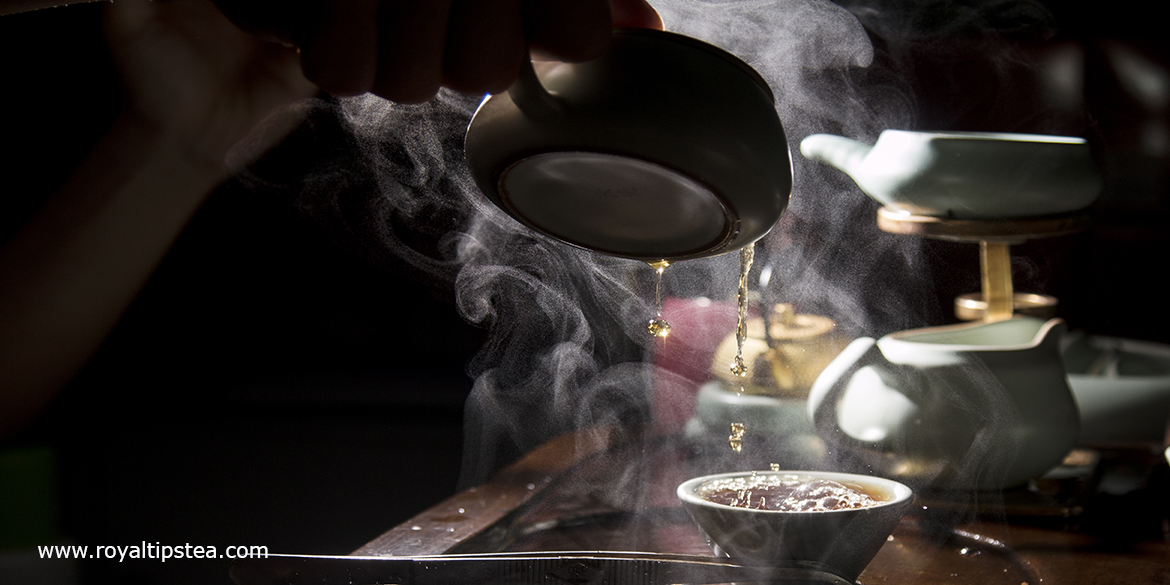
L-theanine, a valuable amino acid in the tea plant
As well as all the beneficial components mentioned above, tea contains an amino acid called L-theanine. Its presence in nature is very scarce, tea being the one of only two beverages that contains it (the other is Gauyusa, an Amazonian tree related to the holly and available now as a herbal infusion). L-theanine is a valuable substance as it stimulates alpha wave activities in our brains.
And when do alpha waves occur? They occur when we are calm and relaxed. They occur as we listen to the sound of the waves on the beach, enjoy beautiful scenery or just close our eyes for an instant. L-theanine helps our body to relax. However, this form of relaxation does not induce sleep, but, with L-theanine working together with caffeine, has quite the opposite effect. It keeps our minds clear, alert and active. It improves concentration. It increases creativity. It helps us think positively and resolve problems more easily. It maintains a healthy balance between body and mind.
Theanine´s use in meditation
If you have ever practised yoga or meditation, you will have experienced the increase of alpha waves. They are perceived through a pleasant state of serenity and deep relaxation. You feel as though you have been transported to another dimension, disconnecting from negative energy and harmonizing the senses. During meditation you develop the intuitive level of consciousness and get to know yourself better.
In this sense the close relationship between tea and Buddhism is more than obvious. Drinking tea made it easier for the monks to meditate. It helped them keep their minds lucid, focused, clear and positive so that they could delve into the inner world without being interrupted by invasive thoughts. According to Chinese philosophy, this state of mind can easily be passed on to other people, which is why one of the central ideas of Buddhism is to maintain a positive state of mind and live in harmony with the environment.
The higher the altitude, the more concentration of theanine in the tea plant
Discovering its innumerable benefits, the monks began to cultivate the tea plant next to temples and monasteries, in the deepest parts of the forests and high mountains. By coincidence, the best teas were the ones that grew on their misty slopes. At high altitude the amount of sunlight is reduced by the dense mist, which also provides moisture and brings about a higher concentration of L-Theanine in the plant. The respect that the monks had for both tea and nature prompted them to improve the quality of production and to find new ways to prepare it. Their efforts soon produced results.
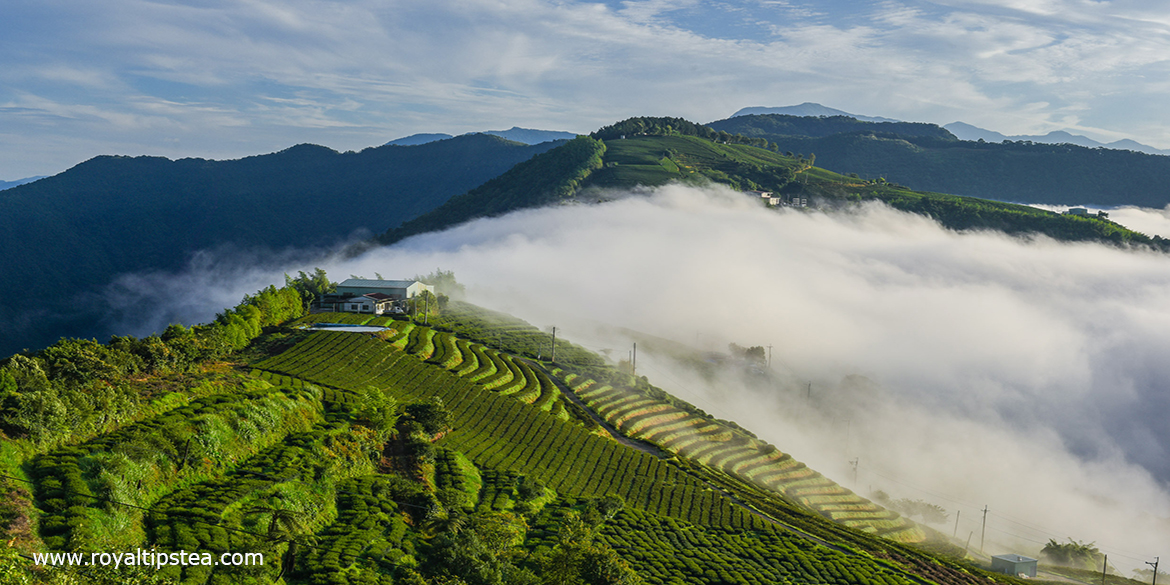
From the poorest to the emperors
As Buddhist monasteries also acted as shelters, libraries and schools, monks soon succeeded in popularizing the practice of tea-drinking among all those who came to visit them. The custom of serving tea during gatherings and ceremonial occasions gave rise to various tea ceremonies, the Gong Fu ceremony being the most famous. This tea ceremony uses specific utensils and high quality, flavourful tea as well as artistic preparation, which requires certain mastery. Oolong and Pu-erh are the teas normally used for the Gong Fu ceremony, never green or white tea.
The excellent quality of the teas produced by the monasteries soon aroused the interest of the imperial court. The best teas were offered as a tribute (known as “Gong Cha”) to Chinese emperors. The court, in turn, provided the necessary funds to enhance the development of new and advanced tea production techniques. Thus, the famous varieties of green tea, white tea, yellow tea and oolong tea gradually appeared. All of them were of spectacular quality and singular flavours.
Some of these teas have not reduced in status for hundreds of years and remain on the top list of the most coveted Chinese teas. Da Hong Pao, one of the best known oolong teas, comes from one of the most spectacular places in China, the Wuyi Mountains, located in Fujian province in the south-eastern part of the country.
The post Tea, buddism and L-teanine first appeared on Blog Royal Tips.
]]>